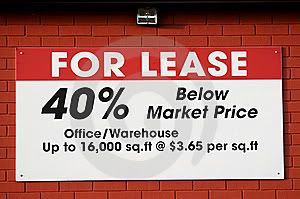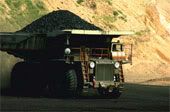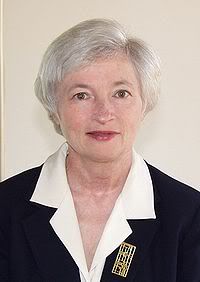Global Market Comments
July 2, 2009
Featured Trades: (BA), (COAL)
1) I spent the evening with Dr. Janet Yellen, the president of the Federal Reserve Bank of San Francisco. She thinks that thanks to the government?s tax cuts and spending programs, we will be out of the recession by the end of this year. After massive inventory liquidation, the auto industry in particular is poised for a rebound. Financial markets are now in better condition than we imagined possible six months ago. However, the pace of the recovery will be frustratingly slow, and it could take several years to return to full employment. Since the majority of the Fed board members feel that inflation will be stuck at 2% for years to come, deflation presents a greater risk than inflation. We are not by any means out of the woods yet. Rising energy prices and interest rates are a potential drag on the economy. Commercial real estate is at the top of her worry list, as falling rents and capital values could create a downward spiral, further impairing the banks. China?s wishes for an alternate reserve currency are impractical. Answering questions as only a UC Berkeley professor can, she further confirmed my belief that we are looking at an ?L? shaped recovery at best (see here and here). However, she did pour some cold water on my idea that the TBT has further to run. ?Inflation running up to untoward levels doesn?t make any sense,? she averred.

2) It?s amazing that Al Franken won his state Supreme Court case over Norm Coleman for the Minnesota Senate seat, just as the Clean Energy Act of 2009 comes up for a vote (see my June 26, 2009 Newsletter). Now the Democrats can ram the bill through, no questions asked, leaving fuming Republicans on the sidelines bitching to Fox News. This is one of those seemingly insignificant events which will have a huge impact on history. The last one of these I can remember was when a Cuban orphan named Elian Gonzalez washed up on a Miami beach, and ultimately threw the Cuban vote, the state of Florida, and the entire national election against Al Gore. The bad news is that the cost of your utility bill, gasoline bill, tax bill, and everything else you buy is going up. Those unhappy readers in the Midwest and South can expect more of their income to get shifted towards the two coasts. The good news is that you get to breathe, and your kids will live a full life.
3) Let me tell you first that my family has a long history with Boeing (BA). During WWII, my dad got down on his knees and kissed the runway when the B-17 bomber in which he served as tail gunner (two probables, one confirmed) made it back despite the many holes. Some 40 years later, I got down on my knees and kissed the runway when a tired and rickety Boeing 707 held together with spit and bailing wire, which was first delivered as Dwight Eisenhower?s Air Force One in 1955, flew me and the rest of Reagan?s White House Press Corp to Tokyo and made it there in one piece. I even tried to buy my own B-17 in the nineties (the Piccadilly Lilly), but was outbid by Paul Allen on behalf of his Seattle Museum. So it is with the greatest difficulty that I examine this company in the cold hard light of a stock analyst. Nevertheless, to say that investors are disappointed by the umpteenth outsourcing caused postponement in the 787 Dreamliner is an understatement. They took the Dow stock down 23% from $53 in days. In fact, long suffering shareholders have been pummeled by a torrent of bad news, with the cancellation of the Pentagon?s futuristic $160 billion Land Warfare Weapons Program and Quantas yanking an order for 15 Dreamliners. But I?m a firm believer in buying when there is blood in the street, and I see bucketfuls. BA is selling at 8.7 times earnings, a huge discount to competitors Lockheed Martin (LMT) at 10.5 times and Raytheon (RTN) at 10.9 times. It has $3.3 billion in cash, a 4% dividend, and an increasingly scare A+ rating on its debt. BA?s immensely profitable defense business still accounts for 52% of revenues. When the super fuel efficient Dreamliner does come through, the three year, $151 billion order backlog for 890 planes will deliver a huge kicker for earnings. Its main competitor, Airbus, does have the minor problem in that its planes keep falling apart fully loaded with passengers. If you can get BA under $40, you?d be getting a best of breed company at a mongrel price.
4) I wanted to get the low down on clean coal to see how clean it really is, so I visited some friends at Lawrence Livermore National Laboratory. The modern day descendent of the Atomic Energy Commission, where I had a student job in the seventies, the leading researcher on laser induced nuclear fission, and the administrator of our atomic weapons stockpile, I figured they?d know. Dirty coal currently supplies us with 50% of our electricity, and total electricity demand is expected to go up 30% by 2030. The industry is spewing out 32 billion tons of carbon dioxide (CO2) a year and the global warming it is causing will lead us to an environmental disaster within decades. Carbon Capture and Storage technology (CCS) locks up these emissions deep underground forever. The problem is that there is only one of these plants in operation in North Dakota, a legacy of the Carter administration, and new ones would cost $4 billion each. The low estimate to replace the 250 existing coal plants in the US is $1 trillion, and this will produce electricity that costs 50% more than we now pay. And while we can build a wall to keep out immigrants, it won?t keep out CO2. This is a big problem as China is currently completing one new coal fired plant a week. In fact, the Middle Kingdom is rushing to perfect cheaper CCS technologies, not only for their own use, but also to sell to us. Since it appears that Obama is not willing to wait on anything, expect to hear a lot of sturm und drang about CCS this year. The bottom line is coal can be cleaned, but at a frightful price. For more on this see my June 15 Newsletter.
QUOTE OF THE DAY
?We are slogging through the starkest economic landscape in our lifetimes,? said Dr. Janet Yellen, president of the Federal Reserve Bank of San Francisco.






